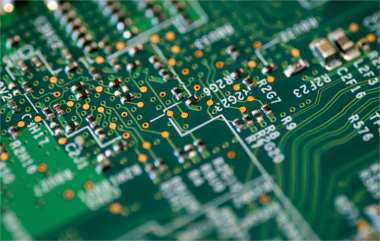
In the electronics industry, CCD and CMOS sensors are key components for capturing images, widely used in digital cameras, smartphones, and security systems. Many users search on Google to understand the differences between them because they directly affect image quality and device performance. This article dives into the definitions of CCD and CMOS sensors, their similarities, differences, and more.
Catalog
I. What is a CCD Sensor?
A CCD sensor, or Charge-Coupled Device, is an image sensor that captures and reads light signals using a charge transfer mechanism. It converts photons into electronic charges through semiconductor materials and transfers these charges row by row through a shift register, ultimately producing high-quality image data. CCD sensors are known for their high sensitivity and low noise, making them ideal for high-end scientific instruments, medical imaging, and professional photography equipment.
II. What is a CMOS Sensor?
A CMOS sensor, or Complementary Metal-Oxide-Semiconductor sensor, integrates amplification and readout circuits at each pixel. Using standard semiconductor manufacturing processes, it converts light directly into voltage signals and processes the data on-chip. CMOS sensors are praised for their low power consumption, high integration, and lower cost, making them widely used in consumer electronics such as smartphone cameras and portable devices.
III. Similarities
CCD and CMOS sensors share several core characteristics:
· Both are semiconductor-based image sensors whose main function is to convert light into electrical signals for digital imaging.
· Both can be used in scientific research, industrial inspection, and security monitoring.
· Both are manufactured using high-precision micro- and nanotechnology processes.
IV. Differences
Despite some similarities, CCD and CMOS sensors differ in several important ways:
1. Manufacturing Process
· CCD sensors are built on silicon wafers, creating a charge transfer channel through specialized fabrication steps, including photolithography, ion implantation, chemical vapor deposition (CVD), and metallization. Each pixel has a doped region that converts photons into electrons
· CMOS sensors use standard semiconductor processes, similar to those used for microprocessors and other ICs. This makes them cheaper and allows additional functions—like amplifiers, analog-to-digital converters (ADC), and signal processing circuits—to be integrated directly on the chip. Each pixel in a CMOS sensor has its own amplifier, allowing independent readout.
2. Readout Method
· CCD sensors read out charges sequentially, transferring charge to a common output node in multiple stages. This process, often compared to a “bucket brigade,” moves charges pixel by pixel until they reach the output amplifier at the edge of the sensor. It’s analog and relatively slow, but produces high-quality images with excellent noise control and signal consistency.
· CMOS sensors allow random or parallel readout, with each pixel having its own readout circuit. This enables faster readout speeds, and integrating circuits on-chip reduces overall power consumption. While early CMOS sensors lagged behind CCDs in image quality, modern CMOS designs now match or even surpass CCDs in many aspects.
3. Power Consumption
· CCD sensors generally consume more power due to the charge transfer process.
· CMOS sensors, thanks to their independent pixel readout, usually operate at much lower power.
4. System Integration
· CCD systems often require external signal processing circuits, meaning camera systems may need more space.
· CMOS sensors can integrate amplifiers, ADCs, and other circuits on the same chip, making camera systems more compact.
V. Conclusion
Sensor technology is increasingly moving toward multifunctional integration. CMOS sensors now include phase-detection autofocus pixels, depth-sensing units, and AI processing modules. Both CMOS and CCD cameras continue to thrive in different fields. Choosing between them depends on the application: for everyday scientific research and general use, CMOS cameras meet most requirements, while CCD cameras remain a mature option for professional and specialized applications.




